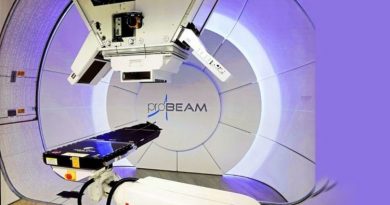Beet Juice May Help People With Peripheral Artery Disease Walk Pain-Free
Research suggests that just a single dose of the maroon juice reduced walking pain in patients by 18 percent.
In some good news for people that have peripheral artery disease (PAD), a small experiment suggests that chugging as little as a single dose of beet juice can cut down on the pain they experience when they go out walking, Reuters reports. The study also indicated that the patients in the study experienced fewer cramps when walking.
Although walking is one of the gentlest forms of exercise, people with PAD experience a great deal of pain when doing it that makes them stop and rest after going just a short distance. The reason for this is that their legs don’t take in adequate oxygen which, in turn, allows them to handle the demand walking places on them.
Diabetes and obesity often go hand in hand with PAD, and regular exercise is often what health experts recommend to patients as part of a healthy lifestyle to combat these health issues. Pain experienced while walking may be off-putting and lead to people ditching the activity altogether.
According to the Mayo Clinic, PAD is a circulatory disease that develops when the blood flow to your limbs is restricted due to a narrowing of the arteries. PAD can cause stroke, heart attack, and critical limb ischemia, a serious condition that happens when open sores don’t heal properly.

Peripheral artery disease is treated by managing the symptoms and by stopping the progression of atherosclerosis in the body. Some of the medications used to treat PAD have nasty side effects, so beet juice may turn out to be a nice natural alternative people can use to help them get active again and manage their symptoms.
The results of the experiment were published in the AHA Journals on Aug 30. For the study, the researchers gave 35 patients with peripheral artery disease 36 supervised exercise sessions that lasted more than 12 weeks. During each 30-minute session, the participants walked on a treadmill, and the incline was set to their individual abilities by adjusting the machines’ speed and incline functions.
The researchers said that half the participants were randomly selected to drink the colorful juice three hours before exercising on the treadmill. The rest of them were given a placebo to drink.
At the experiment’s completion, both groups of patients could walk a longer distance in 6-minute walking tests on the treadmill than they could at the start. However, those that drank the beet juice increased their walking distance by about 53 meters on average. Those that drank the placebo only increased their walking distance by about 25 meters on average.
In the study, authors pointed out that even though the results indicated that beet juice may cut down on pain in walking for people with PAD, it wasn’t an absolute certainty that the benefits could be attributed to the deep red taproot.
They went on to explain that the improvements could be due to the beet juice or because the exercise sessions were supervised. The authors also added that the study was too small to know if beet juice benefited all people with peripheral artery disease.
Dr. Joseph Ladapo, of the David Geffen School of Medicine at the University of California Los Angeles, wasn’t involved in the study, but he made a statement by email about the findings.
“The potential benefits of beets are not yet established in mainstream medical literature. But there’s very little downside to trying it.”
“The biggest downside is that a person could ingest too much sugar, which we are increasingly recognizing as being bad for your health and particularly bad for children, because it contributes to obesity, but that’s about it,” Ladapo said. “Otherwise, beets are a healthy, nutritious food.”
Beets are known to be quite beneficial nutritionally, and they contain many of the vitamins and minerals you need to take in daily as part of a healthy diet. They also contain inorganic nitrates, and that is the ingredient that aids in the delivery of oxygen and minerals to muscles at work, enabling them to utilize oxygen better. This is particularly true in people who are less in shape such as those with peripheral artery disease.
Source: Read Full Article


